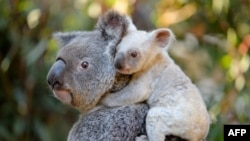A new koala-tracking app and a marsupial hospital are the latest moves to protect one of Australia’s most famous native animals. The furry, tree-dwelling marsupials are in decline in eastern Australia, and authorities hope a multi-million dollar rescue plan will help to save them.
The app will help authorities map and track koala populations in New South Wales state, where the furry marsupials are in decline. Members of the public as well as researchers are encouraged to report koala sightings using the technology.
The koala faces various threats, including loss of habitat, disease, road traffic accidents and attacks by dogs. There are also susceptible to the impact of drought and climate change.
In New South Wales and Queensland the famous, and distinctive, animals are listed as vulnerable under national environment laws. In some areas it is estimated that numbers have fallen by a quarter in the last 20 years.
How it works
New South Wales Environment Minister Matt Kean hopes the app will provide an accurate picture of where the koalas are.
“We are calling on the community to download the ‘I Spy Koala’ app on their phones," said Kean. "That is about getting the community to go out in the wild, in our national parks, identify where koalas are, record it in their app so that we are better placed to protect them into the future. This is all about ensuring that the koalas can continue to thrive so that future generations can enjoy them. This is all part of the New South Wales government’s koala strategy, a AUD$44 (US$29.6m) investment in koalas. (It is) the biggest single investment of any government ever to ensure that koalas are protected and grow into the future.”
Health threats
A new koala hospital is being built in Port Stephens, 180 kilometers north of Sydney, and will be part of a wildlife sanctuary that will open next year.
There will also be more research into chlamydia, a sexually transmitted disease that has infected many koalas.
Fences to channel marsupials and other animals away from busy roads and into specially-made wildlife tunnels will also be built.
In parts of southern Australia officials say there are too many koalas, and that ‘overabundant’ populations are damaging valuable types of trees. In some areas there are programs that seek to reduce marsupial numbers. But further north, conservationists warn that the decline of the koala is an environmental emergency.





